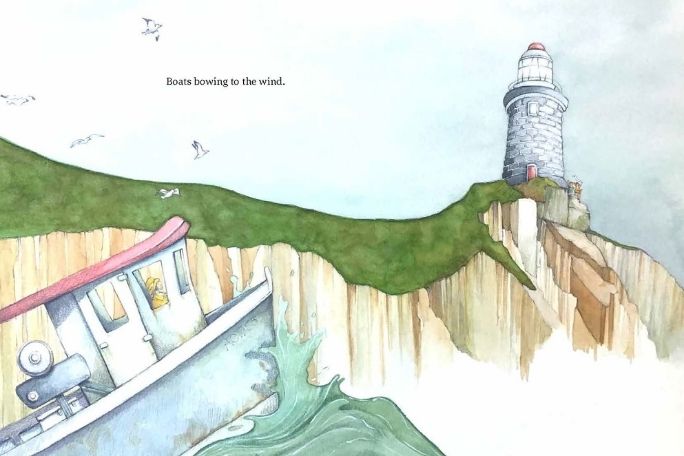Lesson summary
Put on your best beret and white coat as you become a serious art critic, analysing how the illustrator of Where Happiness Hides has put together two images to create different moods in the audience. Then pick up your brush and create your own pictures which communicate important messages to the reader.
Lesson guides and printables
Lesson details
Curriculum mapping
Curriculum codes:
Ideal for: Middle Primary Ages 7 – 9
Themes:
- be creative
- think and connect
Time required: 40 minutes.
Curriculum connections: English, Visual Arts, Literacy, Critical and Creative Thinking, Personal and Social Capability
Tips for Parents and Carers:
This activity may be a challenge for kids, especially if they have not been exposed to much analytical language in art class at school. They may require parent/carer help to refine their work. Don’t push for perfection, but do keep in mind the following tips.
- Statements like “I do/don’t like this” with no additional information are not helpful. This is an opinion, not an explanation of the work. Instead, “The artist has done a good/bad job at…” is a judgement based more on fact than personal preference.
- Don’t just describe the artwork. You can see the artwork. Focus more on the ideas, and evaluating the artwork, as above.
- Cover a range of different art elements in your analysis: colours, shapes, textures, mediums used, style.
Resources required
- Art supplies: coloured pencils, textas, paint, glue, scissors
- Dictionary
- White paper
- Writing pen or pencil
- Where Happiness Hides ebook
Tips for parents and carers
This activity may be a challenge for kids, especially if they have not been exposed to much analytical language in art class at school. They may require parent/carer help to refine their work. Don’t push for perfection, but do keep in mind the following tips.
- Statements like “I do/don’t like this” with no additional information are not helpful. This is an opinion, not an explanation of the work. Instead, “The artist has done a good/bad job at…” is a judgement based more on fact than personal preference.
- Don’t just describe the artwork. You can see the artwork. Focus more on the ideas, and evaluating the artwork, as above.
- Cover a range of different art elements in your analysis: colours, shapes, textures, mediums used, style.
Additional info
Learning@Home resources are designed for parents and teachers to use with children in the home environment. They can be used as stand-alone activities or built into existing curriculum-aligned learning programs. Our Learning@Home series includes two types of resources. The first are fun and challenging real-world activities for all ages, the second are self-directed lessons for upper primary and secondary students. These lessons support independent learning in remote or school settings.


Welcome back!
Don't have an account yet?
Log in with:
By signing up to Cool.org you consent and agree to Cool's privacy policy to
store, manage and process your personal information. To read more, please see
our privacy policy here(Opens in new tab).
Create your free Cool.org account.
Many of our resources are free, with an option to upgrade to Cool+ for premium content.
Already have an account?
Sign up with:
By signing up to Cool.org you consent and agree to Cool's privacy policy to
store, manage and process your personal information. To read more, please see
our privacy policy here(Opens in new tab).